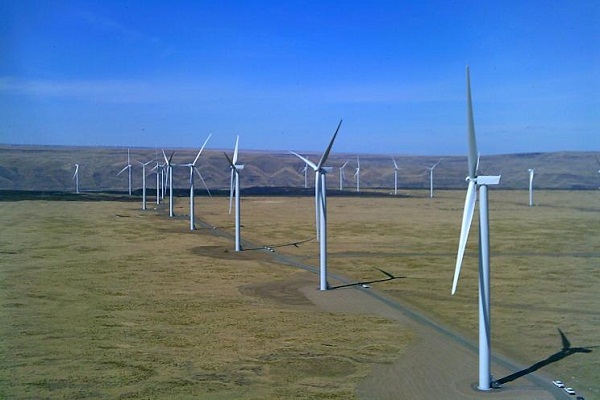Earlier this year, the river and watershed protection group River Network released a report that said it takes 42 gallons of water to produce a kilowatt-hour of electricity, on average. River Network argued that wider adoption of solar photovoltaics and wind power could shrink electricity’s water footprint – and now a second study is supporting that notion.
Synapse Energy Economics, in a report [PDF] prepared for the Civil Society Institute and the Environmental Working Group, doesn’t look only at the water issue. “The Hidden Costs of Electricity: Comparing the Hidden Costs of Power Generation Fuels” attempts to uncover the full spectrum of costs of six common electricity producers – biomass, coal, nuclear, natural gas, solar (PV and concentrating) and wind (onshore and off). But it’s the report’s conclusions related to water that seem particularly pertinent in a time of record heat and widespread drought in the United States, and of growing concern around the world about supplies of fresh water.

Let’s start the discussion here: The Union of Concerned Scientists estimates that 41 percent of our fresh water is withdrawn to produce power – a little more than it takes to grow our food (37 percent), and a lot more than we use for drinking water (13 percent).
The Synapse report notes that coal, natural gas and nuclear are the most egregious water users among the six electricity producers. Yet except for what amounts to a little tip-toeing toward renewables, we’re doing very little to dislodge those industries as our biggest energy producers: Coal is slipping, but mostly in favor of gas, and nukes are often discussed as a clean energy source.
“The government and energy industries are literally flying blind as they plan for continued reliance on coal, natural gas, nuclear power and industrial biomass to meet our energy needs,” Grant Smith, senior energy analyst at the think tank, said in a statement. “The drought intensifies the urgency and the imperative that political leaders in both parties hit the pause button on the headlong rush to support nuclear power and fossil fuel use.”
Some of these electricity producers do return much of the water they withdraw, but hardly without consequence. In July, Matthew Wald in The New York Times detailed the travails of the Braidwood nuclear plant in Illinois. When this Exelon plant first opened it was allowed to operate as long as the temperature of its cooling pond – which bleeds some of its heat to the Kankakee River – was below 98 F. Later that limit was raised to 100 degrees.
This summer, Braidwood had to get special permission to keep operating with the cooling pond at 102 degrees.
The Wall Street Journal’s Rebecca Smith reported just last week on the drought’s impact on a range of power producers, including coal-fired plants. Some have shut down and been replaced by natural gas plants, which in some cases can use far less water in their operation – but there are possibly larger issues with gas. The Synapse report notes that “water is commonly extracted from on-site surface or groundwater supplies” in the fracking process, and “such huge water withdrawals raise serious concerns about the impacts on ecosystems and drinker water supplies.”

So what’s the answer? More solar and wind wouldn’t hurt, the report suggests, echoing the River Network conclusion. Wind uses virtually no water. PV is a water miser, too. Even concentrating solar, which used to be pegged as a water waster by critics, is turning to dry cooling. “Solar power plants with dry cooling use only around 80 gallons per megawatt-hour,” the report says, “about a tenth of the low-end estimate for nuclear power and one-sixth of the low end estimate for coal-fired power generation.”